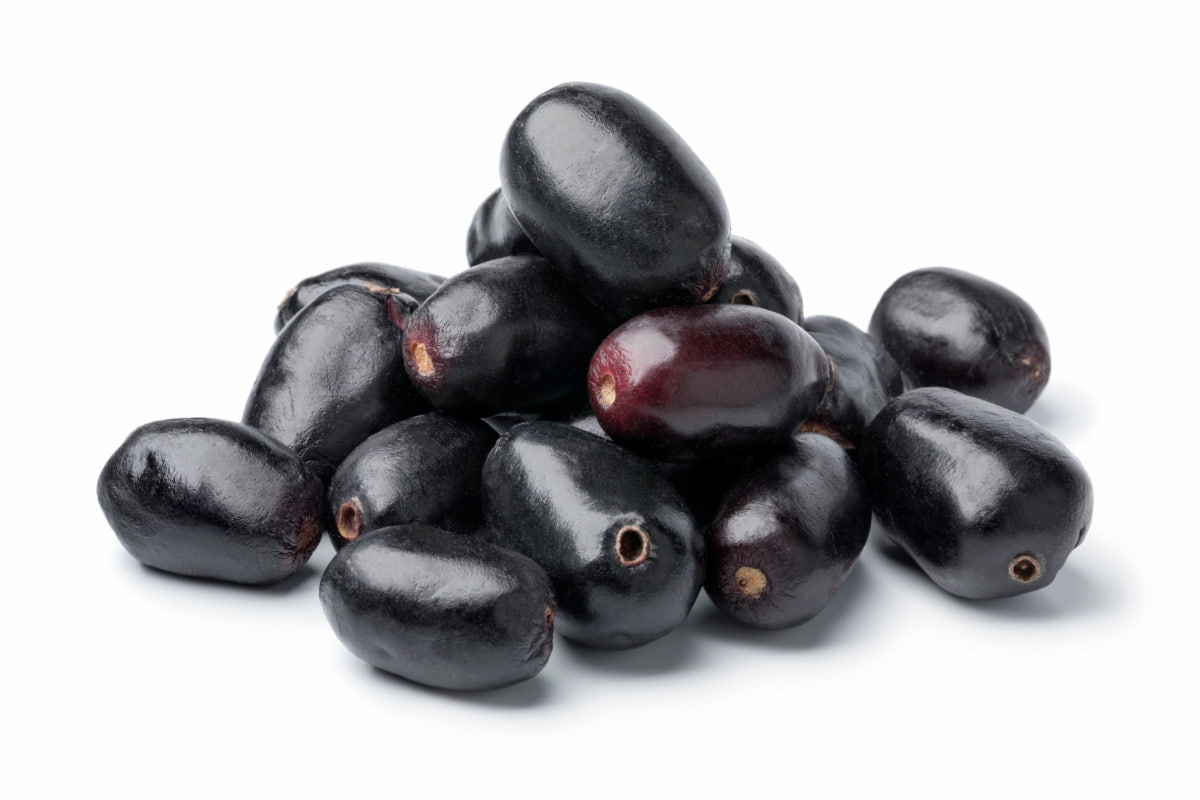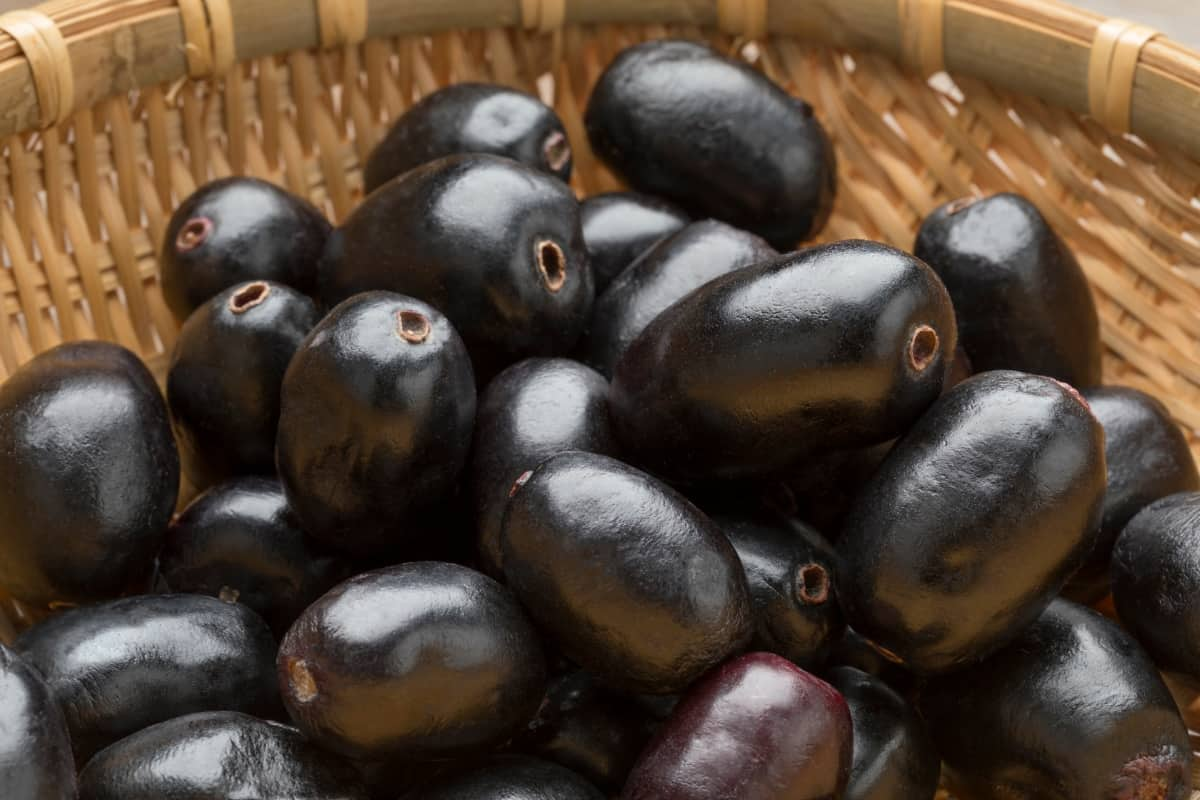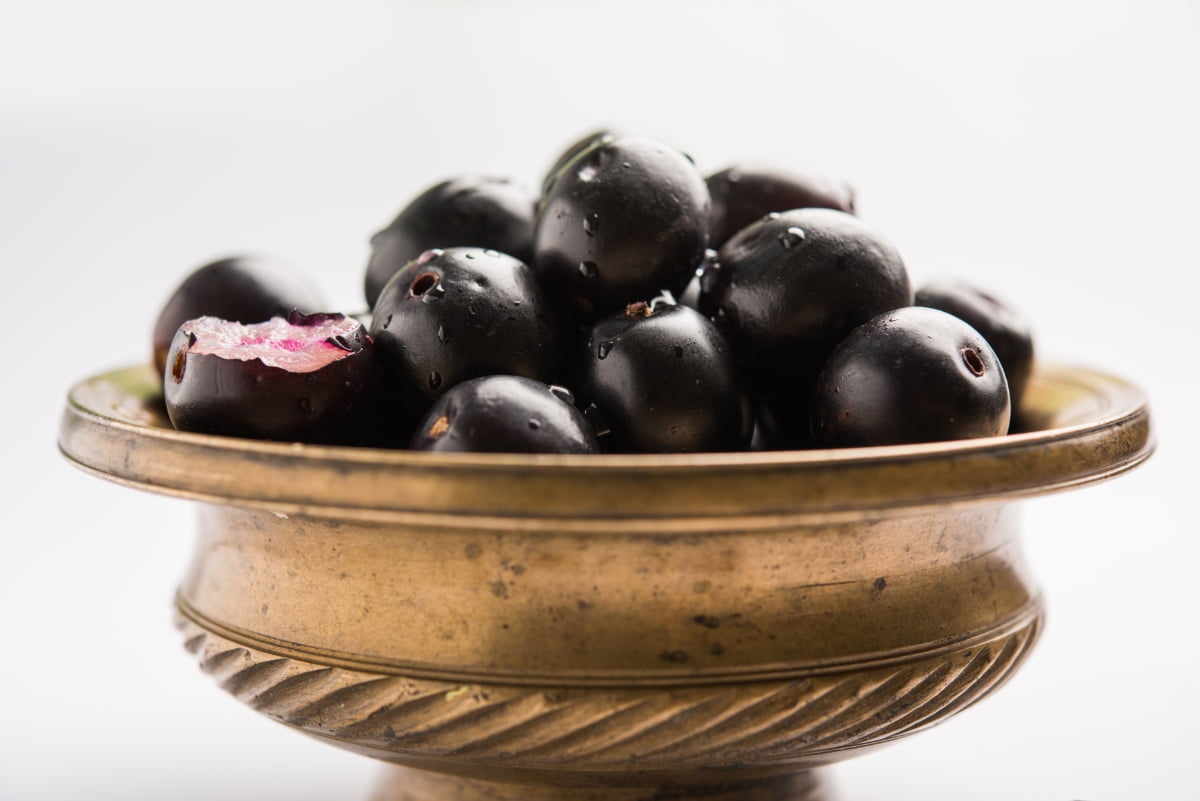Discover the secrets to successful and profitable Goma Priyanka Jamun farming. Learn about effective cultivation techniques, maximizing yields, and optimizing profitability. Explore organic farming practices, pest management strategies, and sustainable cultivation methods. Gain insights into soil requirements, irrigation practices, and post-harvest storage techniques. Stay updated on market trends and profitability analysis to make informed decisions and thrive in the lucrative Goma Priyanka Jamun market.

All You Need to Know About Goma Priyanka Jamun
Introduction to Goma Priyanka Jamun
Goma Priyanka Jamun, scientifically known as Syzygium cumini, is a highly profitable variety of Jamun fruit, prized for its sweet and tangy flavor profile. This variety has gained popularity among farmers due to its high yield potential, market demand. Originating from India, Goma Priyanka Jamun has undergone extensive development to enhance its agricultural characteristics. With careful cultivation practices, farmers can capitalize on its unique qualities and commercial viability.
Jamun, a nutritious indigenous fruit, is prized for its abundance of valuable properties, including iron, sugars, minerals, protein, and carbohydrates. Apart from being consumed fresh, its ripe fruits are utilized in various processed forms such as jelly, jam, squash, wine, vinegar, and pickles. With its spicy flavor, Jamun fruit serves as a refreshing summer drink, while its extracts boast a myriad of pharmacological properties, making it a versatile ingredient with potential health benefits.
Research and Development
The Central Horticultural Experiment Station in Godhra, Gujarat, spearheaded extensive research on Jamun, recognizing its significant health benefits and economic potential. In 2010, the station successfully developed the Goma Priyanka variety, aiming to address the fruit’s susceptibility to disorders and enhance its suitability for semi-arid regions with dry land conditions. Through meticulous breeding and selection processes, the Goma Priyanka variety emerged as a promising solution for farmers seeking high-yield, resilient cultivars.
Characteristics and Adoption
The Goma Priyanka variety, along with its counterpart, Goma Priyanka II, quickly gained popularity among farmers for its impressive attributes. Known for its high yield, boasting 50-70kg per tree from the tenth year onwards, and high pulp content of 85-90%, this variety stands out for its productivity and quality. Its compact stature makes it ideal for high-density planting, allowing farmers to maximize land utilization and optimize yields. The success of Goma Priyanka extended beyond Gujarat, reaching states like Rajasthan, Karnataka, Madhya Pradesh, Chhattisgarh, Tamil Nadu, Maharashtra, Haryana, Punjab, Uttar Pradesh, and Andhra Pradesh.
Impact and Adoption
The introduction of the Goma Priyanka variety revolutionized the cultivation landscape in western India, where systematic orchards were previously scarce. With the support of research institutions like the ICAR-CIAH Regional Station, farmers across the country embraced large-scale block plantations of Jamun, facilitated by access to quality planting material from reputable sources.
The adoption of Goma Priyanka has led to socio-economic prosperity and enhanced nutritional security, with farmers in states like Madhya Pradesh, Maharashtra, Rajasthan, Gujarat, Punjab, Karnataka, Tamil Nadu, Haryana, and Uttar Pradesh reaping substantial earnings ranging from Rs. 250,000 to Rs. 350,000 per hectare.
Origin and Development
The Goma Priyanka Jamun variety is the result of selective breeding and cultivation techniques aimed at improving fruit quality, yield, and disease resistance. Originating from indigenous Jamun varieties, it has been refined over generations to meet the demands of modern agriculture.
In case you missed it: How to Grow and Care for Jamun Bonsai: Planting Instructions

Agricultural Characteristics
Goma Priyanka Jamun trees typically exhibit vigorous growth and have a well-developed canopy. The fruits are medium-sized, with a deep purple to black color when ripe. They boast a delightful blend of sweetness and tartness, making them a favorite among consumers.
Growth Conditions and Climate Requirements
These trees thrive in tropical, subtropical climates, preferring temperatures between 25°C to 35°C. They require well-drained soil which has good organic content and thrive in areas with ample sunlight.
Tree Height and Canopy Management
Mature Goma Priyanka Jamun trees can reach heights of up to 15 meters, requiring careful canopy management to maintain optimal fruit production and ease of harvesting.
Planting and Cultivation Practices
The optimal planting season for Goma Priyanka Jamun is during the monsoon months, ensuring adequate moisture for establishment. Proper spacing of trees, typically 6 to 8 meters apart, allows for sufficient airflow and sunlight penetration.
Soil Preparation and Fertilization Needs
Prior to planting, soil should be well-prepared with organic matter and balanced nutrients. Regular fertilization with nitrogen, phosphorus, and potassium promotes healthy tree growth and fruit development.
Irrigation and Water Management
Efficient irrigation is essential for Goma Priyanka Jamun, especially during the initial establishment phase. Drip irrigation systems are recommended to minimize water wastage and ensure consistent moisture levels.
In case you missed it: Project Report of 1-Acre Java Plum/Jamun Farming: Production Economics, Cultivation Cost and Profit Analysis

Pest and Disease Management
While generally resistant to pests and diseases, Goma Priyanka Jamun may occasionally face challenges from insects like fruit flies and diseases such as anthracnose. Organic and chemical control measures can effectively mitigate these issues.
Pruning and Maintenance
Regular pruning helps in maintaining the Proper shape and health of Goma Priyanka Jamun trees, promoting better fruit quality and yield. Seasonal maintenance tasks include weed control and mulching to conserve soil moisture.
Harvesting and Yield
Harvesting of Goma Priyanka Jamun typically occurs from late spring to early summer, when fruits are fully ripe. Careful handling during harvest ensures minimal damage and maximum shelf life.
Post-Harvest Handling and Storage
Proper post-harvest handling techniques, including sorting and packaging, are crucial for preserving fruit quality. Cold storage facilities help in extending the shelf life of harvested fruits, maintaining freshness and flavor.
Market Potential and Profitability
Goma Priyanka Jamun enjoys strong demand in both domestic and international markets, driven by its exceptional taste and nutritional value. Farmers can achieve significant profitability through cost-effective cultivation practices and strategic market positioning. Goma Priyanka, a variety of jamun, has gained popularity in farmers due to its high yield, high pulp content, low seed weight, consistent fruit production, and ideal for high-density planting.
It has expanded beyond Gujarat to other states, including Rajasthan, Karnataka, Madhya Pradesh, Chhattisgarh, Tamil Nadu, Maharashtra, Haryana, Punjab, Uttar Pradesh, and Andhra Pradesh. Before 2009, systematic orchards were not available in western India for jamun cultivation. Farmers across India are now starting large-scale block plantations using Goma Priyanka material from stations like VNR Nursery and Ambica Agro, promising socio-economic prosperity and nutritional security for farmers.
In case you missed it: How to Grow and Care for Java Plum/Jamun: A Step-By-Step Comprehensive Guide for Beginners

Conclusion
Goma Priyanka Jamun stands as a beacon of prosperity for farmers, offering high yields, excellent quality, and wide market acceptance. Its adoption signifies a promising future for agricultural sustainability and economic growth, benefiting farmers and consumers alike.
- Feed Your Flock for Less: Top 10 Tips to Save on Chicken Feed
- Ultimate Guide to Ossabaw Island Hog: Breeding, Raising, Diet, and Care
- Hatching Answers: The Top 10 Reasons Your Chickens Aren’t Laying Eggs
- Eggs and Economics: Breaking Down the Cost of Raising Backyard Chickens
- Defend Your Greens: Proven Methods to Keep Iguanas Out of Your Garden
- Ultimate Guide to Cinnamon Queen Chicken: A Comprehensive Guide for Beginners
- Ultimate Guide to California Tan Chicken: Breeding, Raising, Diet, Egg-Production and Care
- Ultimate Guide to Marsh Daisy Chicken: Breeding, Raising, Diet, and Care
- 10 Types of Chicken Farming Businesses You Can Start for Profits